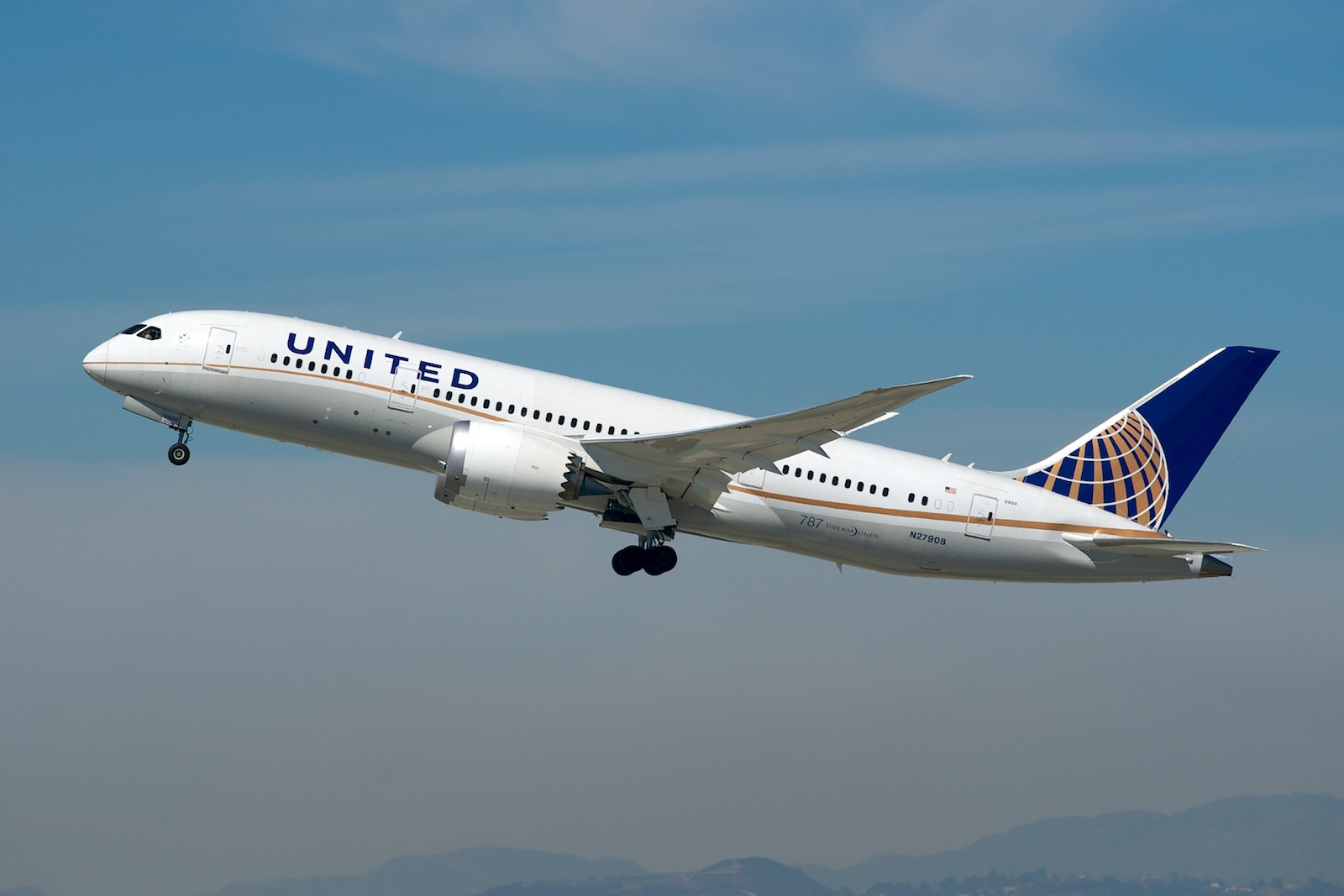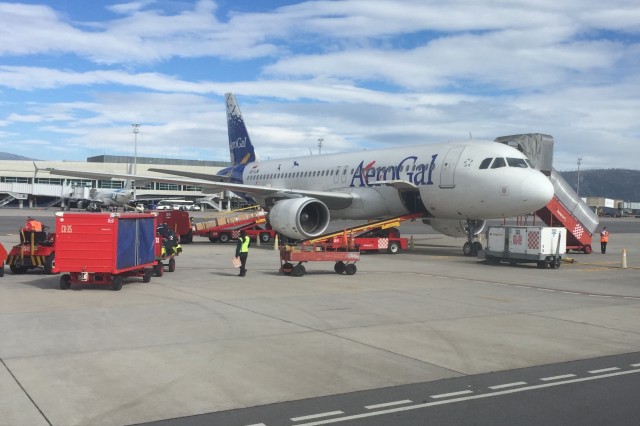
HC-CJM, a 2010-built A320-214, still in the Aerogal livery on the ramp at SEQM – Photo: Bernie Leighton | AirlineReporter
Recently, I found myself in Ecuador to go experience endemism in person. If you are not biologically inclined, I am referring to going to the Galapagos archipelago in the Galapagos Province of Ecuador.
I flew into Quito on American Airlines, but because I was part of a group, I was given no choice, or information, on how we were getting to Puerto Baquero Moreno (SCY). If it had been up to me, I’d have flown LAN Ecuador. After all, I am Oneworld Emerald and would’ve loved priority baggage, boarding, lounge access, and whatever else LAN offers Emeralds. Thing is, it wasn’t up to me. We were to fly Avianca Ecuador, operated by Aerogal, not even with seat selection.
Having done my research and spoken to as many frequent-flying locals as I could, I had heard that LAN was head-and-shoulders above both (quasi government owned) TAMà‰ and Avianca. Downcast, but excited to visit islands that cause tons of theological contention, I made my way to Mariscal Sucre Airport in Quito with a quiet sense of sadness.
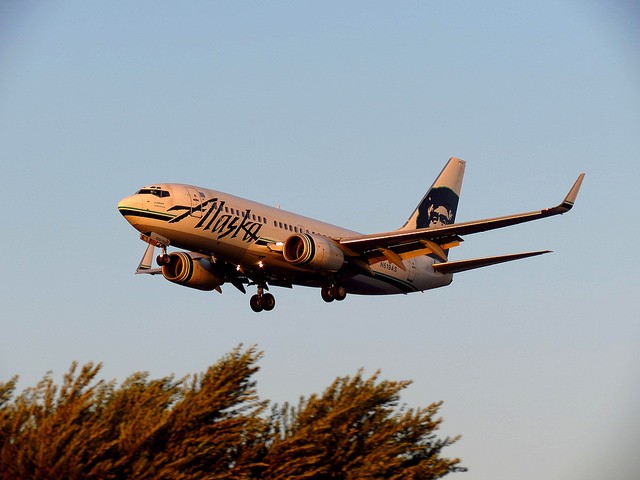
An Alaska Airlines Boeing 737-700 landing at LAX – Photo: Daniel Betts | Flickr CC
On the way back from my recent trip to the UK, I was scheduled to have barely a two-hour layover at Los Angeles International Airport (LAX). That’s a pretty tight connection to clear immigration and customs, then change terminals, so I was expecting my newly-acquired Global Entry membership to save the day.
Yes, Global Entry was extremely convenient, but what I thought would be a story about how I made my connection with moments to spare did not turn out that way. Turns out that the fact I ended up on a flight, arriving to Seattle at 1:52 am, with only one other passenger, made my experience much more interesting.
Here’s how it happened.
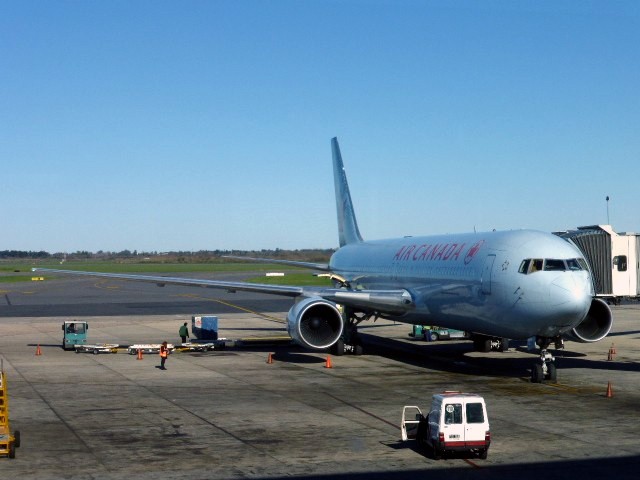
An Air Canada 767-300ER waiting to depart Buenos Aires – Photo: Colin Cook
I recently had the opportunity to travel with a group of friends to Buenos Aires, Argentina. In part one of this story, I reviewed my flight to Buenos Aires. This second part will cover the return leg to North America, where I flew in Air Canada Business Class.
The flight down to Buenos Aires was quite the adventure (nearly missed connections, language barriers, difficult boarding process, etc). After a wonderful five days in Argentina and Uruguay, it was time to come home. Given the opportunity, I absolutely recommend that you visit both of these countries. I had heard wonderful things about Buenos Aires and it definitely lived up to its billing as the ’œParis of South America.’ The city was incredibly vibrant and we truly immersed ourselves in the culture. I found the art of the country to be particularly interesting!
In part one of this series I provided an overview of my airline sampler trip (5 airlines over 4 days) and offered my thoughts on my very first flight with Virgin America, from Dallas to San Francisco. Here we pick back up at SFO for a quick journey down to LAX in the first class cabin aboard a United 787-8.
This leg of my airline sampler was actually the catalyst for the entire trip. I happened to stumble upon an announcement that United would be briefly returning the 787 to domestic service for once weekly (Friday) service from SFO-LAX. I didn’t get the opportunity to check out the Dreamliner when United had them on domestic runs when they were first introduced. After a number of friends booked their own 787 experiences only to be disappointed by the wrong plane at the gate, due to operational issues, I decided to hold off. I was skeptic for too long and wound up missing my opportunity. Some time had passed and United now had a number of 787s in service, so I figured that the time was right.
The economy fare was very attractively priced at a meager $72.10 — what a bargain! When United.com solicited me to pay an extra $29 for economy plus I jumped at it.
As a Boeing fan-boy, I was excited, but that joy would soon evaporate like spilled Jet A on a hot day. It pains me to report that problems began before I ever stepped foot on the plane’¦
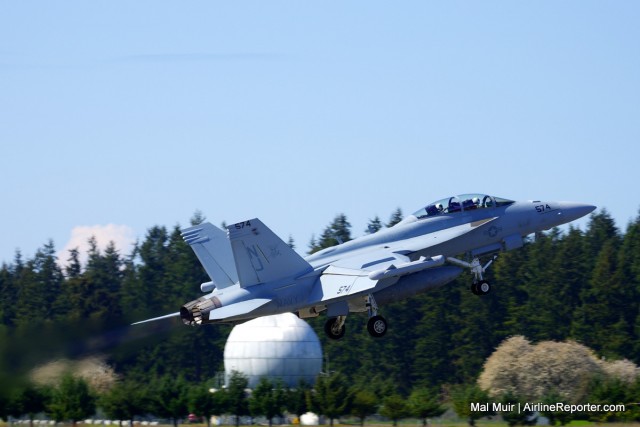
An EA-18G Growler from VAQ-129 climbs out of OLF Coupeville in full afterburner
Picture this: the sun is shining, the sky is blue, and yellow dandelions are beginning to bloom in the green grass. Sounds pretty good, right? As AvGeeks, what could make this better? Well, how about the sound of jets? Not just any jets but fast moving jets, the kind that are flown by the U.S. Navy.
Interested? You might want to head about 90 minutes northwest of Seattle and check out the NOLF (aka OLF) Coupeville. I recently got to experience all of the above, and more, and figured I should share what I experienced.



